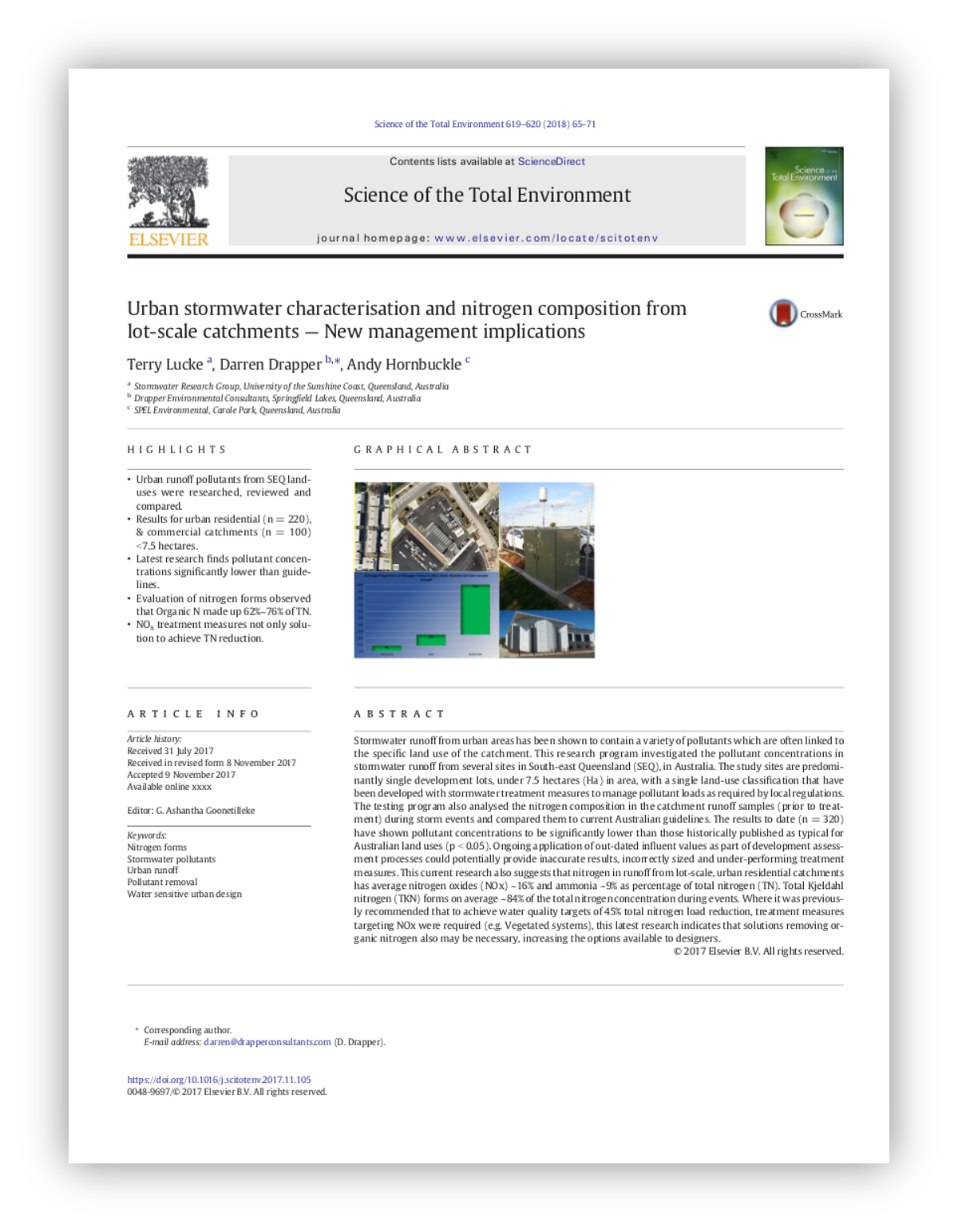This research program investigated the pollutant concentrations in stormwater runoff from several sites in South-east Queensland (SEQ), in Australia.
Highlights
- Urban runoff pollutants from SEQ land-uses were researched, reviewed and compared.
- Results for urban residential (n = 220), & commercial catchments (n = 100) < 7.5 hectares.
- Latest research finds pollutant concentrations significantly lower than guidelines.
- Evaluation of nitrogen forms observed that Organic N made up 62%–76% of TN.
- NOx treatment measures not only solution to achieve TN reduction.
Authors
Stormwater Research Group, University of the Sunshine Coast, Queensland, Australia
Terry Lucke, Associate Professor in Civil and Hydraulic Engineering, PhD, FIEAust, CPEng, EngExec, NER, APEC Engineer, IntPE(Aus)
Drapper Environmental Consultants, Springfield Lakes, Queensland, Australia
Darren Drapper, Principal, Drapper Environmental Consultants
SPEL Stormwater, Carole Park, Queensland, Australia
Andy Hornbuckle, Team Leader Asia Pacific – Water Quality
Abstract
Stormwater runoff from urban areas has been shown to contain a variety of pollutants which are often linked to the specific land use of the catchment. This research program investigated the pollutant concentrations in stormwater runoff from several sites in South-east Queensland (SEQ), in Australia. The study sites are predominantly single development lots, under 7.5 hectares (Ha) in area, with a single land-use classification that have been developed with stormwater treatment measures to manage pollutant loads as required by local regulations. The testing program also analysed the nitrogen composition in the catchment runoff samples (prior to treatment) during storm events and compared them to current Australian guidelines. The results to date (n = 320) have shown pollutant concentrations to be significantly lower than those historically published as typical for Australian land uses (p < 0.05). Ongoing application of out-dated influent values as part of development assessment processes could potentially provide inaccurate results, incorrectly sized and under-performing treatment measures. This current research also suggests that nitrogen in runoff from lot-scale, urban residential catchments has average nitrogen oxides (NOx) ~ 16% and ammonia ~ 9% as percentage of total nitrogen (TN). Total Kjeldahl nitrogen (TKN) forms on average ~ 84% of the total nitrogen concentration during events. Where it was previously recommended that to achieve water quality targets of 45% total nitrogen load reduction, treatment measures targeting NOx were required (e.g. Vegetated systems), this latest research indicates that solutions removing organic nitrogen also may be necessary, increasing the options available to designers.
About Science of the Total Environment



